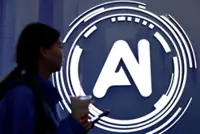Marketing firms are using artificial intelligence to help analyse influencers and predict whether they will opine about the election. — The New York Times
Brands love when social media stars take to Instagram or TikTok to advertise their soap, probiotic sodas, makeup and more. But many of those same brands are eager to avoid influencers who discuss politics.
Making sure the two don’t mix has become a fraught exercise in the growing, and often unpredictable, influencer industry. How can a brand join the conversation while making sure it doesn’t get too deep?
With the presidential election looming, some marketing agencies have started to pitch advertisers on new tools that grade the so-called brand safety of social media personalities. Some of the tools even use artificial intelligence to predict the likelihood that a particular influencer will discuss politics in the future.
A tool recently introduced by Captiv8, a marketing firm that helps advertisers such as Walmart and Kraft Heinz connect with influencers, uses AI to analyse mentions of social media stars in online articles, and then determines whether they are likely to discuss elections or “political hot topics”.
The firm also assigns letter grades to creators based on their posts, comments and media coverage, where an “A” means very safe and a “C” signals caution. The grades incorporate categories such as “sensitive social issues”, death and war, hate speech or explicit content.
Viral Nation, another influencer agency, also offers marketers a product that makes “risk profiles” for creators. The tool, which the company has been using for more than year, assesses years of posts – including hours of dialogue from videos – and can detect whether people are holding weapons or protest signs in their content, even if those elements aren’t mentioned in captions or audio.
“Brands are definitely asking for this,” Krishna Subramanian, a founder of Captiv8, said. “We noticed from the election before, people wanted to know – have creators talked about the election and talked about the president? Because they don’t want to be in that conversation.”
The way marketers gauge suitability online directs billions of dollars in spending and helps shape discourse on the Internet. After many major brands faced consumer boycotts during Donald Trump’s presidency for inadvertently running digital ads alongside conspiracy theories and terrorist propaganda, companies created new industry guidelines to help them avoid funding harmful content on social media. Since then, many advertisers have also stopped running messages in news outlets in the name of brand safety.
Some conservatives say the industrywide definitions have unfairly dinged right-wing sites. These arguments about “brand safety” – an ad industry term for ensuring that marketers do not appear on or next to objectionable content – were at the centre of a House Judiciary Committee hearing in July and a new lawsuit last week from Elon Musk, the owner of the social platform X.
At the Judiciary Committee hearing, GroupM, a unit of the ad giant WPP that spends billions of dollars annually on behalf of blue-chip advertisers such as Ford and Coca-Cola, disclosed that while the news media was historically a main driver of advertising, less than 5% of its overall client ad spending now went to news as trust in news sites fell to a low. Unilever, the consumer products giant that owns brands such as Dove and Pond’s, said less than 1% of its US$850mil (RM3.77bil) in US ad spending went to digital news.
But assessing an individual’s brand safety is more complicated than looking at that of American Idol or The Wall Street Journal. Yet marketers are keen to figure it out, as the creator economy is projected to reach US$480bil (RM2.12 trillion) by 2027, nearly double the figure from last year, according to Goldman Sachs.
“As more time goes on, the more history people have online, the more information you need to evaluate in terms of the content they put out,” said Tyler Vaught, the head of influencer marketing at Edelman, a public relations giant, which is enthusiastic about Captiv8’s software.
Vaught, who believes that demand for such tools will continue beyond the election, said that discussing politics wasn’t necessarily disqualifying for creators, but that brands “don’t want any surprises”. Their nightmare, he said, was hiring an influencer and then hearing: “Hey, this person said something 10 years ago and we’re cancelling them and the brand has no idea.”
He added, “They would love to know what that person might do.”
A video promoting Viral Nation’s “advanced brand safety” service for marketers starts with a hypothetical text exchange among two marketers set to ominous music. “So ... what, exactly, happened? HOW?” the first one writes. “One of our influencers,” the other responds. “Can’t tell if it’s recent or something old that wasn’t scrubbed. Either way we missed it.” (“We missed it,” is then emphasised.)
“I compare it to a background check,” said Nicholas Spiro, the chief product officer at Viral Nation. “A lot of this is done with things like keywords. You can go in and set your keywords so it can detect if there is content discussing Joe Biden, for example, if that’s something you care about.”
Mae Karwowski, the founder of Obviously, another influencer marketing firm, said that most of the concern around political issues came from brands that did not work extensively with creators in 2016 and 2020. She added that the brands’ keyword filters can include things like watermelon emojis, which signal support for Palestinians.
The new Captiv8 tool forms a “political discussion analysis” of creators from media coverage, according to an internal presentation, and questions include whether the firm predicts the creator will talk about Republicans or Democrats.
Marketers can also plug influencers into Captiv8’s software to see a “safety” grade for their content and media coverage about them. Simone Biles, a seven-time Olympic medalist, has an “A”. The Nelk Boys, a group of Canadian pranksters on YouTube who recently recorded a podcast with JD Vance, the Republican vice presidential candidate, have a “C”, based on references to hate speech, crime and profanity in their posts.
Creators don’t typically see these assessments of advertisers analysing them so granularly.
DripDrop, an electrolyte drink mix brand, has leaned into influencer marketing recently, working with Kirsten Ferguson, a Peloton instructor. But politically, Alexandra Dacks, the company’s marketing director, said it has been “very careful about not associating with people on either end of the spectrum because that could alienate a lot of people”.
Dacks feels reassured by the new technology. “So much of this can be hidden or happened a long time ago,” she said. “It can be really nice to have something that pulls all that out for me, and I don’t have to do it manually.” – The New York Times





